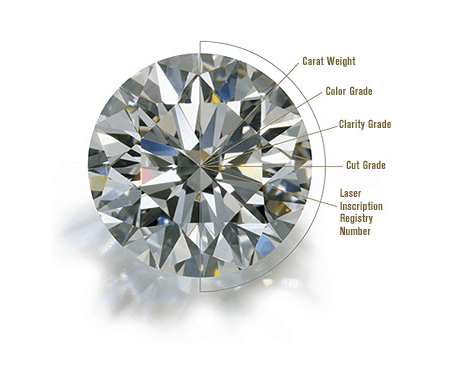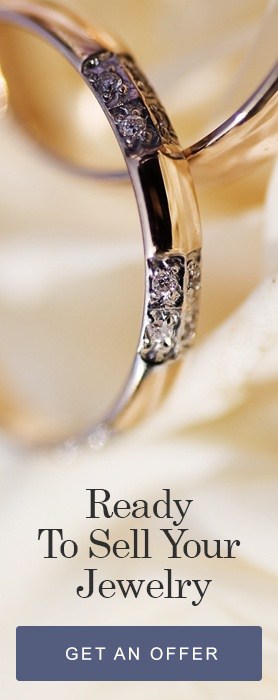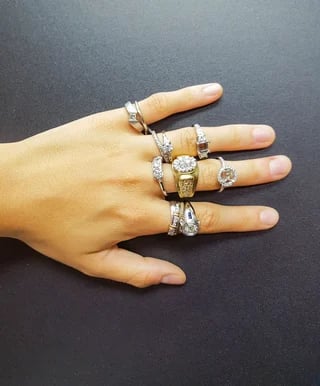 When choosing an engagement ring, all anyone can seem to talk about is the diamond.
When choosing an engagement ring, all anyone can seem to talk about is the diamond.
Diamond this, diamond that…
Square cut, clarity, and did you see the size of that thing?
What most people don’t know is that the ring setting (or mounting) - the little home for your precious
diamond - is truly where it’s at.
The setting is the bones and body of the ring, while the diamond is the heart. Many first-time buyers are unaware that the two come separately - because who would have thought that rings come assembly required?
The proper ring setting can provide a creative and unique aspect to this special piece of jewelry. It mustn’t be overlooked or chosen in haste.
If you’re lost and confused, worry not. We’ve created this article for novices near and far, trying to navigate their way through the many options for engagement ring settings. So let’s break it down.
1. Prong
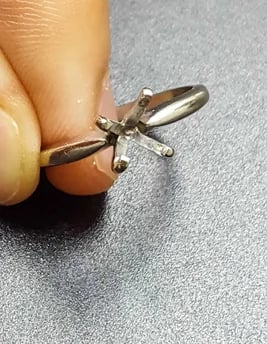 The classic PRONG setting is one of the most popular choices for ring settings.Think of it as a little hand giving your diamond a firm squeeze.This modest selection takes a huge step back from the limelight and truly lets the diamond do its thing. The two most common type of prong settings are four and six prong. Prong settings lift the diamond up, showcasing it and making it look bigger than it is. This look is simple and classy, and never goes out of style. Many people use this setting as a temporary holder for the diamond with the hope of upgrading to something brighter in the future.
The classic PRONG setting is one of the most popular choices for ring settings.Think of it as a little hand giving your diamond a firm squeeze.This modest selection takes a huge step back from the limelight and truly lets the diamond do its thing. The two most common type of prong settings are four and six prong. Prong settings lift the diamond up, showcasing it and making it look bigger than it is. This look is simple and classy, and never goes out of style. Many people use this setting as a temporary holder for the diamond with the hope of upgrading to something brighter in the future.
Caution: Because the prong setting elevates the diamond - it may snag - so watch out!
2. Bezel 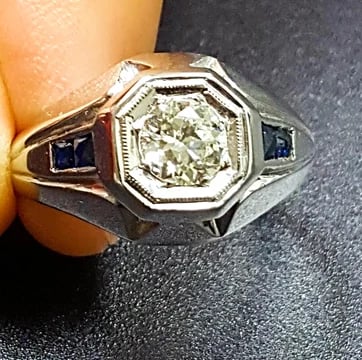
The BEZEL setting is by far your best bet when it comes to choosing a secure selection. It features a vertical rim of metal which firmly surrounds the diamond, seamlessly trapping it in place. The bezel setting is the oldest type of jewelry setting, priotitizing safety above all.
Furthermore, It has a fun vintage appeal to it and deviates from more traditional styles. It protects the diamond from getting scratched and is therefore the most practical choice for busy, active people. Afterall, no one wants to risk losing that precious, pressure-cooked little rock.
3. Tension
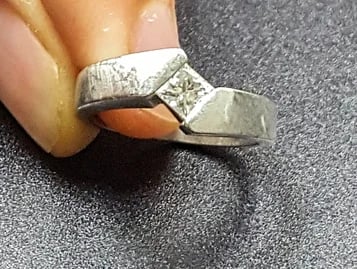 Hold on to your hats, a TENSION setting will really keep your diamond hanging. A tension setting holds the diamond from two sides using pressure as opposed to prongs, bezel, or an alternative type of mounting. This setting provides a very unique look, causing the diamond to look like it’s floating. Now that's magical.
Hold on to your hats, a TENSION setting will really keep your diamond hanging. A tension setting holds the diamond from two sides using pressure as opposed to prongs, bezel, or an alternative type of mounting. This setting provides a very unique look, causing the diamond to look like it’s floating. Now that's magical.
Under all this pressure, the diamond is highly visible and exposed. Tension settings come in various stlyes, some with thicker bands, some thin and twisty. This style is unique and ideal for high visibility. But be careful! This bare bones look may be a risky choice. Those bare edges make losing your diamond much more likely.
4. Halo
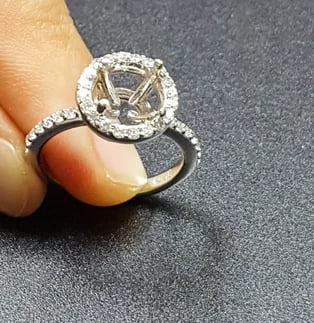 Oh, the HALO setting. As you may imagine, a halo setting features a circle of tiny diamonds placed around the larger center diamond. A halo setting can be a huge win because it can make your diamond look bigger than it actually is. This allows you to choose a lower carat stone, thus providing a less expensive option. Most agree that a halo setting is a tasteful cost saver that does not compromise the look of the ring. One may also choose a diamond studded band to add extra sparkle to the ring. Featured left is a halo ring setting with a gorgeous diamond studded band. All that's missing is the queen diamond herself.
Oh, the HALO setting. As you may imagine, a halo setting features a circle of tiny diamonds placed around the larger center diamond. A halo setting can be a huge win because it can make your diamond look bigger than it actually is. This allows you to choose a lower carat stone, thus providing a less expensive option. Most agree that a halo setting is a tasteful cost saver that does not compromise the look of the ring. One may also choose a diamond studded band to add extra sparkle to the ring. Featured left is a halo ring setting with a gorgeous diamond studded band. All that's missing is the queen diamond herself.
5. Pave 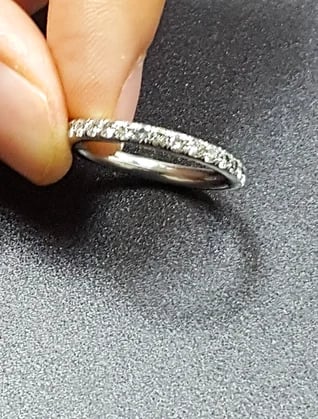
The PAVE setting refers to a band “paved” with many little diamonds.Think of a cobble stone street in a small village in Italy - sparkly and romatic. This makes the ring sparkle in the light and stand out in any kind of weather. Small diamonds are placed next to each other without any spaces - this makes the setting appear to be made out of diamonds and diamonds alone. This twinkly style is a "partner" setting to be added to other types of settings. While the image featured to the right is only a pave wedding band, this look can be applied to other settings such as prong or halo. It's elegant and ideal when choosing a simpler setting such as prong.
6. Channel 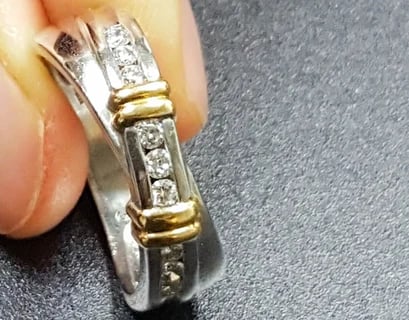
A CHANNEL setting is similar to a pave setting with a couple of minor differences. Again, this type of setting refers specifically to the band of the ring. The band is filled with tiny diamonds - but they are placed in the groove of the band - allowing the rest of the band to frame them delicately. The diamonds are held tightly in place and cannot catch on anything. A channel band adds a unique and shiny twist to any beautiful diamond ring.
7. Cluster
A CLUSTER setting is precisely what it sounds 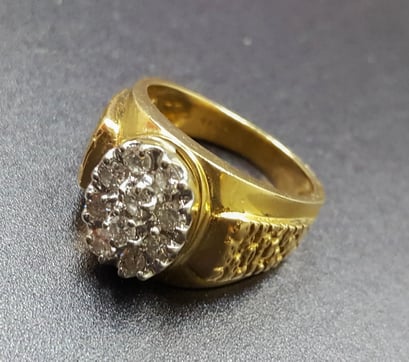 like. This setting keeps your diamonds cozy and close, bunching them together to look like one large diamond. Sometimes, cluster settings contain various stones of different sizes, often resembling a beautiful bouquet.
like. This setting keeps your diamonds cozy and close, bunching them together to look like one large diamond. Sometimes, cluster settings contain various stones of different sizes, often resembling a beautiful bouquet.
As pictured on the right, the stones may all be the same size. Cluster settings create a unique and funky appearance. If you're looking for something a little different, you've come to the right place.
8. Sidestone
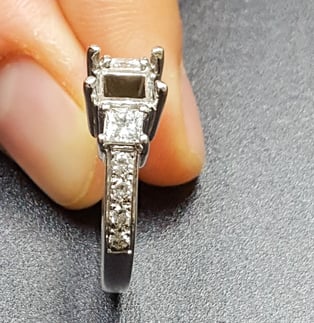 A SIDESTONE setting includes two or more added stones on the side of the ring. They keep the center diamond company without trying to steal the limelight. Think of a sidestone setting as your diamonds side-chicks, adding backup and extra sparkle. Afterall, a diamond is a girl's best friend.
A SIDESTONE setting includes two or more added stones on the side of the ring. They keep the center diamond company without trying to steal the limelight. Think of a sidestone setting as your diamonds side-chicks, adding backup and extra sparkle. Afterall, a diamond is a girl's best friend.
This setting increases the overall appearance of the ring, brightening up the band without covering the entire thing in diamonds. This classic and sparkly touch might be just the right thing to give your ring a little extra flavor.
9. Cathedral
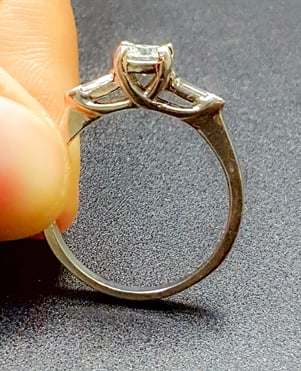
A CATHEDRAL setting is similar to prong setting. While simultaneously out to mimic the architecture of a cathedral, it also elevates the diamond, supporting it with tiny metal arches. This setting adds height and truly shows off the diamond in all it's sparkly glory. It also adds a little hidden touch of detail to the side of the ring. These gentle and delicate beams romanticize the ring and are perfect for a lady who loves all things classic.
10. Three Stone
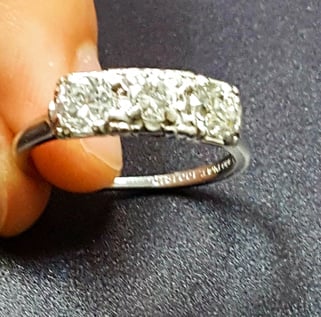
The THREE STONE setting keeps the party in the front by carving out space for the addition of three frontal diamonds instead of one. This look is bold and flashy as the side two diamonds can be made to look like part of the middle diamond (pictured left) or two separate pieces. After all, three diamonds are better than one.
* All photographs by Luriya's own Taylor Cartey

